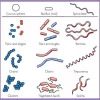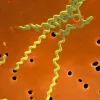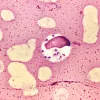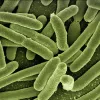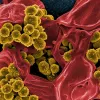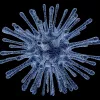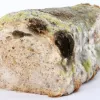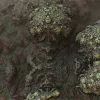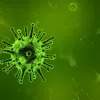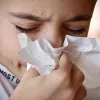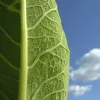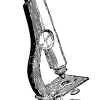Important update from TheSchoolRun
For the past 13 years, TheSchoolRun has been run by a small team of mums working from home, dedicated to providing quality educational resources to primary school parents. Unfortunately, rising supplier costs and falling revenue have made it impossible for us to continue operating, and we’ve had to make the difficult decision to close. The good news: We’ve arranged for another educational provider to take over many of our resources. These will be hosted on a new portal, where the content will be updated and expanded to support your child’s learning.
What this means for subscribers:
- Your subscription is still active, and for now, you can keep using the website as normal — just log in with your usual details to access all our articles and resources*.
- In a few months, all resources will move to the new portal. You’ll continue to have access there until your subscription ends. We’ll send you full details nearer the time.
- As a thank you for your support, we’ll also be sending you 16 primary school eBooks (worth £108.84) to download and keep.
A few changes to be aware of:
- The Learning Journey weekly email has ended, but your child’s plan will still be updated on your dashboard each Monday. Just log in to see the recommended worksheets.
- The 11+ weekly emails have now ended. We sent you all the remaining emails in the series at the end of March — please check your inbox (and spam folder) if you haven’t seen them. You can also follow the full programme here: 11+ Learning Journey.
If you have any questions, please contact us at [email protected]. Thank you for being part of our journey it’s been a privilege to support your family’s learning.
*If you need to reset your password, it will still work as usual. Please check your spam folder if the reset email doesn’t appear in your inbox.
Micro-organisms
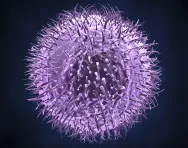
All about micro-organisms
Micro-organisms (also known as microbes) cannot be seen by the naked eye (micro means tiny and organism means a living creature); many hundreds of them would fit on the full stop at the end of this sentence.
They are found everywhere, in soil, air, water, on your skin and in your guts. Most of the time, when they are in the right place the majority of micro-organisms are not harmful to people and often do a lot of good such as breaking down waste and making bread. We couldn’t live without them!
There is a huge variety of micro-organisms. They can work alone or in colonies. They can help you or hurt you. Most importantly, they make up the largest number of living organisms on the planet. There aren’t millions, billions, or trillions. There are trillions of trillions of trillions of microbes around the Earth. Maybe more!
The five types of living micro-organisms are bacteria, viruses, fungi, algae and protozoa.
- Bacteria can be rod-shaped, spiral-shaped or spherical. Some bacteria can be useful, such as certain types found in the stomach, but other nasty kinds can give you a bad tummy ache or a sore throat.
- Viruses are parasites, which means they can only survive inside the cells of other living things. They can cause infectious diseases, such as chicken pox or measles.
- Fungi can be different sizes ranging from a single cell, like yeast (used to make bread rise), or other fungi such as moulds or toadstools.
- Algae can also be many different sizes – some single-celled algae are actually used in toothpaste!
- Protozoa are single-celled organisms and can cause many diseases, although they are occasionally helpful too.
Top 10 facts
- Micro-organisms first appeared on earth about 3.5 billion years ago. They were very important in sustaining life on our planet.
- Microbes generate at least half the oxygen we breathe.
- Microbes thrive in extremes of heat, cold, radiation, pressure, acidity and darkness, and often where no other life forms could exist and where nutrients come only from inorganic matter.
- Typically there are between 10,000 and 10 million bacteria on each hand!
- The number of germs on your fingertips doubles after you use the toilet.
- When you cough germs can travel about 3 metres if you do not cover your nose and mouth.
- Almost one million bacteria can be created by one person in a school day.
- There are more bacterial cells in our bodies than there are human cells.
- While bacteria on the outside of your body can cause serious infections, the bacteria inside your body can protect against it. Studies have shown that animals without gut bacteria are more likely to catch serious infections.
- Humans have used bacteria to help us in other ways for thousands of years. Bacteria are used to make yogurt and cheese. The flavour of these foods comes from bacterial by products!


Boost Your Child's Maths & English Skills!
- Start your child on a tailored learning plan
- Complete the activities added each week
- Watch your child's maths & English confidence grow!
Did you know?
- Very serious bacterial infections can be treated with special drugs that kill bacteria called antibiotics. If people use antibiotics in the wrong way, for example to treat diseases like colds and flu that are caused by viruses, they stop working. The bacteria evolve into what is known as antibiotic resistant forms. MRSA is one strain that has become extremely dangerous because it has evolved to survive almost all antibiotics. However, antibiotics do have a very important part to play in keeping us healthy.
- If you pick up a handful of garden soil you will be holding hundreds if not thousands of different kinds of microbes. One single teaspoon of soil contains 1 billion bacteria and 120,000 fungi and 25,000 algae. Without soil microbes, we would all die. The work they do in our soil is incredibly complex but it all boils down to this: microbes eat, so we eat. Plants are unable to take from the soil the nutrition they need without microbes working in the soil.
- Microbes are alive, and must have nutrition to survive, and that nutrition comes from organic matter. As they consume the nutrients they need, microbes create foods like nitrogen, carbon, oxygen, hydrogen and trace minerals for our plants. It is the microbes that convert the minerals in the soil into a form our plants can use to grow and produce food and flowers for us.
- Infectious diseases experts know that when we have a cold and cough the virus particles can travel at 320 kilometres an hour and up to 900 metres. That is faster than a passenger jet at take off! When you cough germs can travel about 3 metres if you do not put your hand or a handkerchief over your nose and mouth. It is also important to wash your hands thoroughly after going to the toilet – there are lots of bacteria in bathrooms and they can multiply quickly in warm, damp places. There are lots of antibacterial soaps in the shops which claim to kill almost all of the bacteria on your hands, but this effect can often last for only a short time – until you touch something on which more bacteria are lurking!
Look through the gallery below and see if you can spot the following:
- The different shapes of bacteria
- Spiral bacteria
- Magnified protozoa
- Magnified rod bacteria
- Spherical bacteria
- A virus cell
- Mouldy bread
- Fungal spores magnified
- An infection seen under a microscope
- It's important to sneeze into a tissue!
Gallery
About
There are so many different types of micro-organisms, or microbes, that scientists still don’t really know how many there are, but they do know that micro-organisms do lots of different things! There are good microbes that are used in food, others that are used in medicine and more that are used to clean up the environment. There aren’t that many bad microbes, but they make you sick or cause rot and destruction.
Bacteria are really important microbes – life on earth couldn’t exist without them!
Bacteria have only one cell, shaped like a sphere, rod or spiral. A single one, called a bacterium, is really tiny; millions would fit on the head of a pin! Bacteria have been around for millions of years and they can live in any area of the earth, no matter how hot or cold.
Very few bacteria are harmful to you, most help to keep you healthy. Good bacteria are used in making some of the dairy products you like to eat and also some types of medicines. Bacteria are some of the best decomposers – they break down dead and decaying organic matter, from leaves to insects. Best of all, bacteria can be used to clean up oil spills to keep the environment healthy too. Bad bacteria love it best when you or your environment is unhygienic or dirty. They take any chance they get to take over and multiply. Bacteria can make copies of themselves very quickly so just one bad bacterium can make you sick or spoil your food!
Viruses are very simple microbes, they can't do much by themselves. Viruses need a host (another living organism) that gives them everything they need to work. Viruses take any chance they can to find a host. They get inside the host's cells and take it over. Viruses use the host cells machinery to make lots of copies, so many in fact that the cell bursts and infects other cells around it. They can make more viruses very quickly – just one virus can turn into lots of viruses and make you sick.The common cold and flu are viruses which rely on the host coughing or sneezing near another host in order to spread.This is why it’s really important to cover your nose and mouth if you cough or sneeze, and the best part of your body for this job is the crook of your elbow – that way, the virus isn’t on your hands!
Fungi grow everywhere. They cannot make food by themselves so they have to have to get their nutrients from a host. They grow on lots of different hosts, anywhere that is warm and damp. Fungi can’t move around so they make spores that are like seeds. Spores fly away on the breeze or in water, on animals or clothing and find a new place to grow that has everything they need. If they can’t find one, they just hibernate (sleep until the right place comes along).
Parasites aren’t very independent – in fact, they need another organism, their host, to live on or in. Resources from their host, things like nutrients, shelter and whatever else they need, allow the parasite to live and grow. Different parasites need different resources so each has its own favourite host. Parasites are always on the lookout for their perfect host but some are so tiny you can only see them with a microscope so they are easy to miss.
Protozoa and algae are single-celled micro-organisms that get their food from their surrounding environment. They can be found in a variety of places, including fresh water, sea water and even in soil. This group is large and very diverse. They can be used to clean or purify but can also cause lots of very serious diseases.
Words to know:
Acidity - the concentration of acid in a substance
Algae - an organism belonging to a group that lives mainly in water and includes the seaweeds. Algae differ from plants in not having true leaves, roots, or stems
Antibiotics - a naturally produced substance that kills bacteria, but has no effect against viruses, used as a medication
Bacteria – single-celled microorganism
Colonies - groups of organisms of the same kind that are living together and dependent on each other
Diseases - medical conditions in humans, plants, or animals that is not the direct result of physical injury
Environment - all the factors influencing the life and activities of people, plants, and animals
Fungi - plural of fungus. A single-celled or many-celled organism that reproduces by spores and lives by absorbing nutrients from organic matter.
Generate - to bring something into existence or effect
Infections - the transmission of infectious microorganisms from one person to another or an infecting microorganism
Infectious - a disease that is capable of being passed from one person to another
Inorganic - composed of minerals rather than living material
Micro-organisms - a tiny organism such as a virus, protozoan, or bacterium that can only be seen under a microscope
Minerals - a substance that occurs naturally in rocks and in the ground and has its own characteristic appearance and chemical composition
Parasites - a plant or animal that lives on or in another, usually larger, host organism in a way that harms or is of no advantage to the host
Particle - a very small piece of something
Protozoa - a single-celled organism that can move
Spherical - shaped like a sphere
Spores - a small, usually one-celled structure produced by seedless plants, algae, fungi, and some protozoans that is capable of developing into a new individual
Sustaining - to make something continue to exist
Viruses - a very simple microbe which requires a host to reproduce
Related Videos
Just for fun...
- Explore a brilliant kids' microbiology website, packed with games, activities, challenges and Minecraft maps
- For KS2 students read disease fact files and download revision guides
- Use a microscope to find disease-causing germs in this online game
- Buy plush-toy microbes to snuggle up with!
- Micro-organisms like fungi and bacteria play an important role in the production of many drinks and foods. Why not try some microbial recipes?
Best books about micro-organisms for children
Find out more
- The BBC's KS2 guide to micro-organisms
- Watch a National Geographic video about the human microbiome
- A complete guide to micro-organisms for children, from the Children's University of Manchester
- Microbe experiments to learn more
- A useful dictionary of words to do with this topic
- Find out loads more about microbes and disease with games, downloads and home science
- Understand how our bodies fight off invading microbes
- Learn about Edward Jenner, the man who discovered the first ever vaccine
- Look through a microscope at a virus attacking a cell and the body's immune system overpowering it with white blood cells
See for yourself
- How small are micro-organisms? See micro-organisms at different magnifications and compare them to the head of a pin.
- See inside your immune system and meet your bodyguards and enemies.
- Look at some close-up pictures of bacteria.
- Find out more about microbes and about bacteria by looking into an online microscope
- Marvel at some beautiful micrographical photography
- See videos of micro-organisms moving
